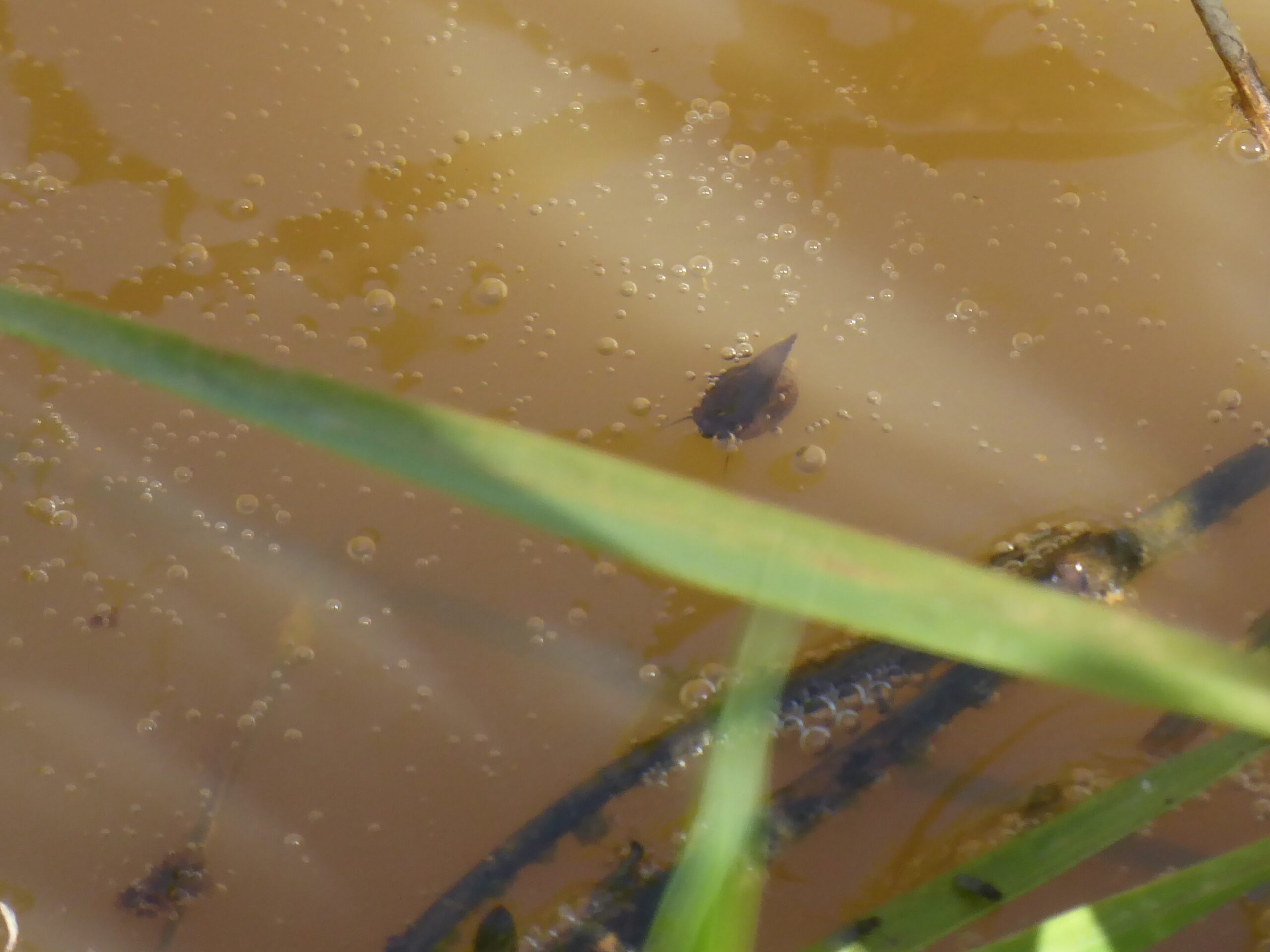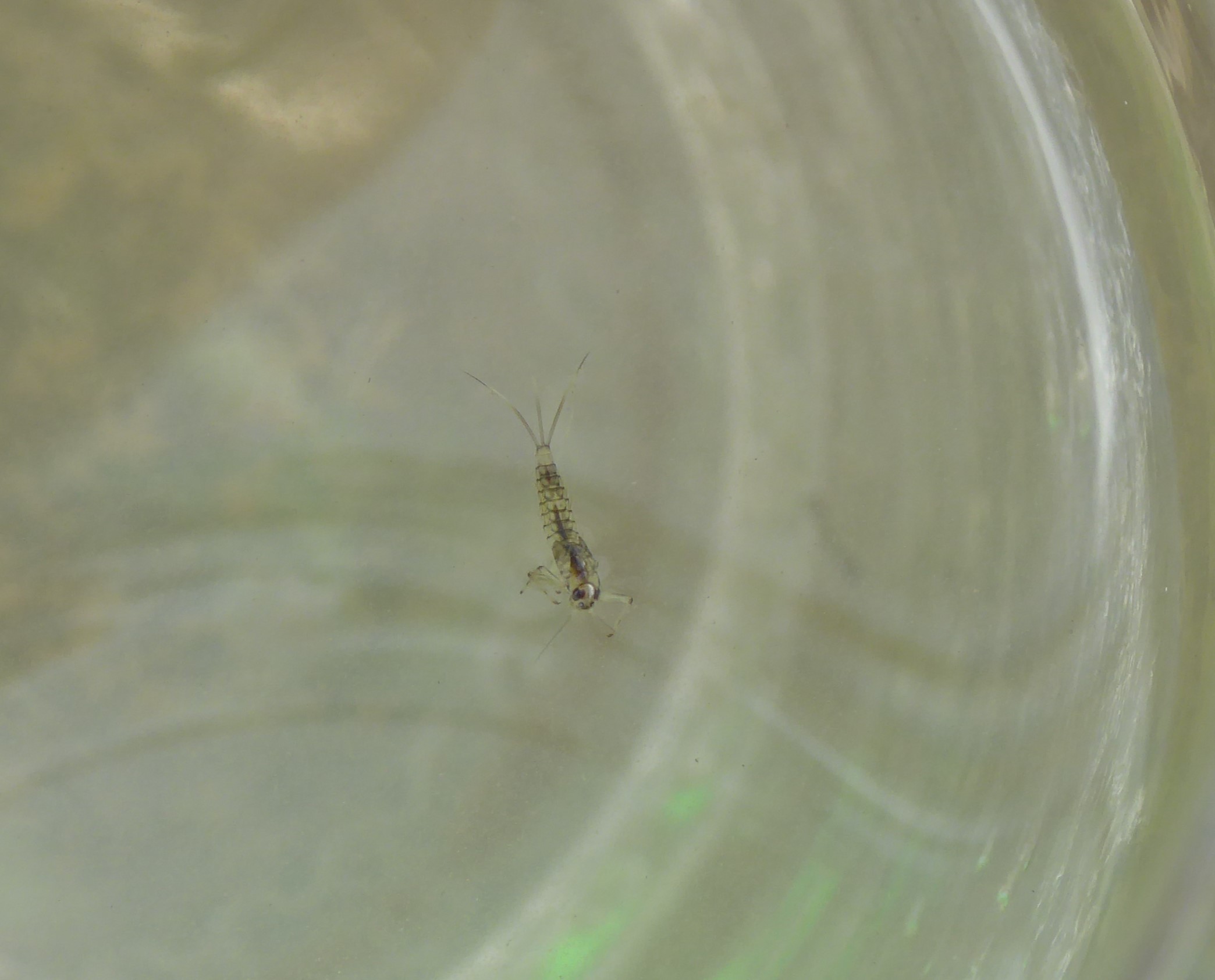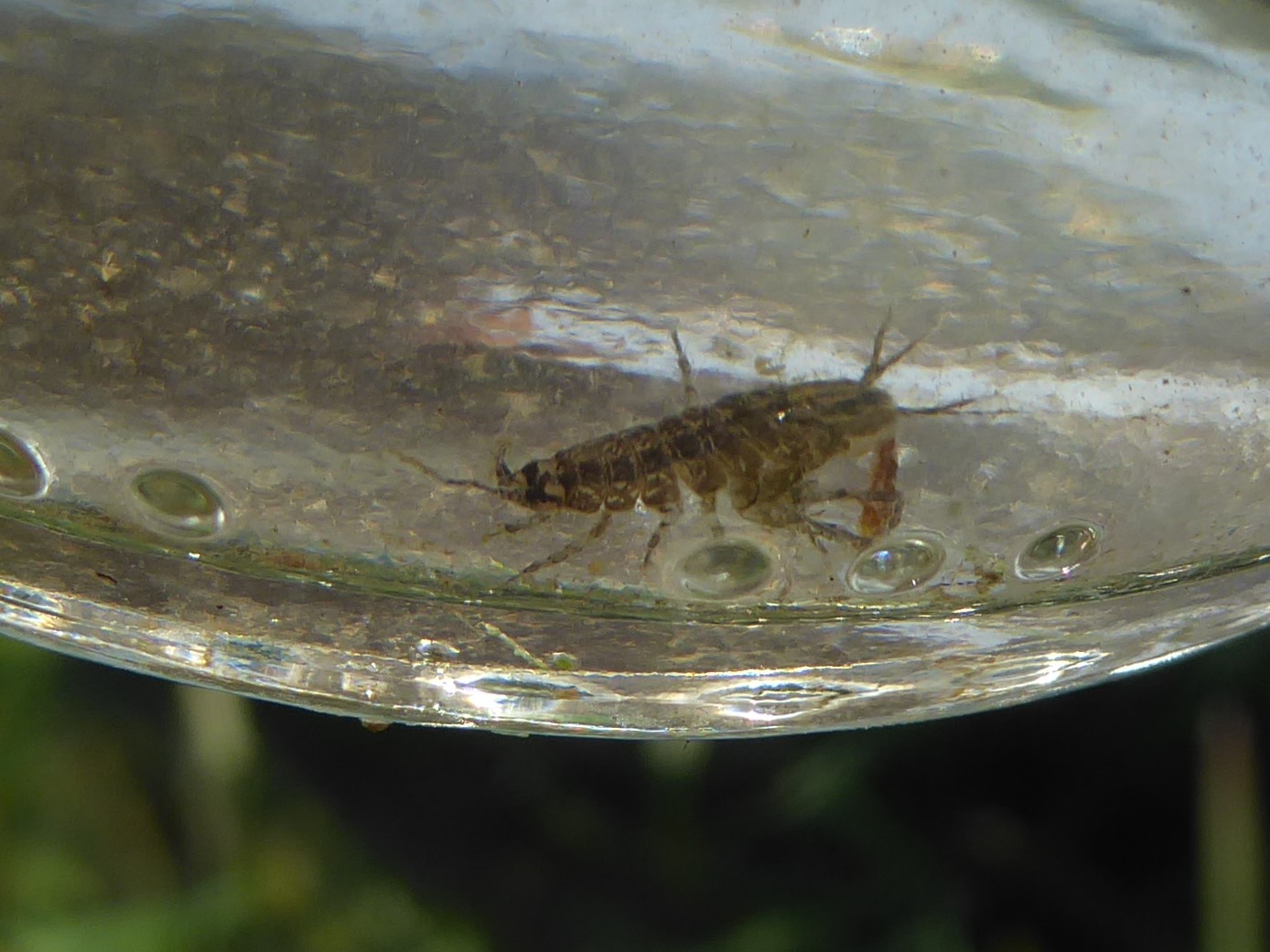Also known as the hog louse, this is related to the woodlouse, but lives in water. There are four species of water louse. The two-spotted water slater is the most common and has two spots on the back of its head. They can tolerate low levels of oxygen, so are often found in stagnant water. They feed on decaying organic matter in the mud and weed at the bottom of the pond. They don’t swim very well, but crawl through the mud and move from pond to pond on plants, birds, and floods. An easy difference between pond slaters and shrimps is that while shrimps are flattened side-to-side, pond slaters are flattened top-to-bottom, like woodlice.
-
Bladder Snail

Mr C and I spent a while pond-watching yesterday. We spotted tadpoles, whirligig beetles and pond snails. The snails were bladder snails and were cruising upside-down along the underside of the water’s surface. Bladder snails eat dead plant matter. They are prolific breeders and the American Bladder Snail (Physella acuta), often used for cleaning up aquariums, is considered an invasive species. The Common Bladder Snail (Physa fontinalis) is pale, oval in outline and is common throughout the British Isles. Bladder snails swim upside-down on the surface of the water to breathe, as they have lungs, not gills.
-
Phantom Midge Larva

In my fishing net on Tuesday, I also found some of these. They were difficult to manoeuvre into the jam jar for photographing, so I lost a couple. At first I assumed they were mosquito larvae, but I realised that they didn’t have the hammer-head shape, rather a question-mark silhouette as you can see. Also, once in the jam jar, this one moved like a caterpillar, looping along the bottom, rather than wiggling zig-zag style through the water as I would expect a mosquito larva to do. I’m still not 100% sure, but I think this could be a phantom midge larva so-called because it is transparent – you can see its eyes and insides only. You can get other midge larvae that aren’t transparent and some look more like worms.
-
Mayfly larva

I’m not sure why I didn’t get round to pond-dipping last summer, but I was determined to remedy that! Yesterday, while the sun was out, I took my fishing net down to the stream. The stream is still flowing fast, so all I had to do was to dip my net in. It took a few attempts before I caught anything live, mostly it was seeds and plant-litter. Then I found this little shrimpy-looking thing. Only it wasn’t a shrimp, it was a mayfly larva – almost transparent with three prongs on its tail and six tiny legs.
Living up to a year in the water, a mayfly adult lasts for only a day. It emerges winged, but not quite mature. It goes to hide for a few hours before shedding its skin a final time. Taking off as one of a cloud of mayflies, it will mate in flight and then die exhausted. The male will fly to dry land to die and the female, after laying eggs on the surface of the water, collapses. The eggs drop to the bottom of the water and stick to plants and stones. The Latin name for mayfly is “Ephemeroptera” which means “short-lived with wings.”
